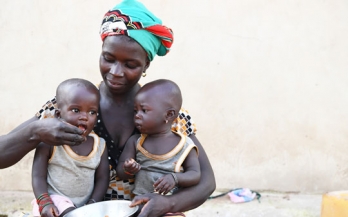Animal-source foods (ASF; meat, poultry, fish, dairy, and eggs) have attracted considerable attention for both their role in diets and their environmental impacts - and their production also plays an important role in livelihoods, particularly in low- and middle-income countries (LMICs).
Information on the coverage and consumption of biofortified foods is critical to assess the performance and potential for impact of programmes. The objective of this study was to develop and test methods for assessing the coverage and consumption of biofortified foods and their contribution to nutrient intakes of children and women of reproductive age.
Most front-of-pack labelling (FOPL) systems operate in high-income countries (HICs) on packaged foods purchased in a supermarket setting. To explore the role that FOPL and other types of visual cues could play in supporting consumers’ ability to choose nutritious foods in LMICs, GAIN convened three workshops in 2018-2019.
Large-scale food fortification (LSFF) is a cost-effective intervention that is widely implemented, but there is scope to further increase its potential. To identify gaps and opportunities, we first accessed the Global Fortification Data Exchange (GFDx) to identify countries that could benefit from new fortification programs.
In 2017, a cross-sectional survey, comprised of a household and market in two states (Ebonyi and Sokoto) was conducted using the Fortification Assessment Coverage Toolkit (FACT). The aim of the survey was to provide information on household coverage and consumption of fortifiable and fortified foods among children and women of reproductive age, and availability and quality of fortified foods from markets.
GAIN works on supply and demand, as well as on changing incentives, rules and regulations to encourage production and consumption of nutritious and safe foods. We seek to understand and tackle barriers faced by small enterprises working to boost availability, affordability, desirability, and convenience of nutritious foods like eggs, especially for people on low-incomes.
This factsheet highlights the vastly different levels of egg supply seen across African regions, selected African countries, and selected high-income countries. It discusses why eggs remain scarce and expensive in many low-income settings, including across much of Western, Eastern, and Middle Africa.
This factsheet describes the nutritional content of eggs. Eggs are a rich source of protein, essential fatty acids, vitamins, and minerals.
An egg is formed of two main parts, the egg white (albumen) and the egg yolk. The white contains mostly water, proteins and some minerals.
This factsheet describes the nutritional benefits of eggs for key target populations. Eggs are among the best food sources to improve diet quality in infants, as they contain nutrients which help brain development and physical growth.
The framework comprises a set of drivers, plus four determinants (food supply chains, external food environments, personal food environments, and behaviours of caregivers, children and adolescents), which together influence the diets of children and adolescents.










